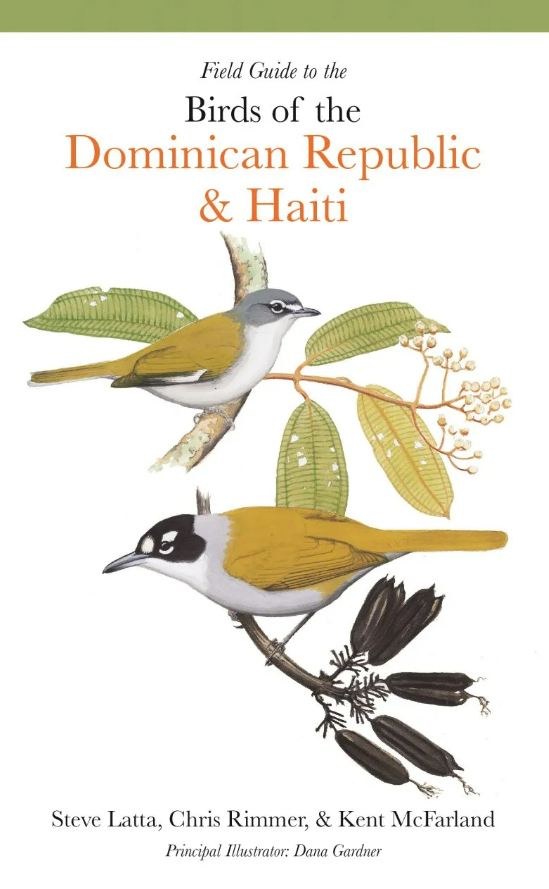Field Guide to the Birds of the Dominican Republic and Haiti
- Field Guide to the Birds of the Dominican Republic and Haiti by Steven Latta, Christopher Rimmer and Kent McFarland
- Princeton University Press, 2022. 240 pages.
- ISBN 9780691232393. Pbk, £20.
- Bookshop from £17
It was way back in 2006 that the same authors collaborated with several others to write the first edition of this book. Although it was a softback, at 384 pages it was quite heavy and carried a lot of information on the species covered. By comparison this edition at 240 pages gives just the core identification which you actually need in the field and weight has reduced by 40%.
This new version has a much better layout with text facing the illustrations in typical field guide style. The latter have mostly been created by Dana Gardner with some from the original work from 2006 being repeated but 150 new images have been created and support has been sought from five other artists who have shared illustrations, some of which have appeared in other books. These all work well and are clear and groups such as seabirds, swifts, swallows and martins are shown in flight. There are monochrome distribution maps for every species excepting vagrants. Personally, I prefer a bit of colour on these, but the truth is that birds here are either resident or winter visitors.
The taxonomy used is that of the AOU and where subspecies are mentioned they are those given in the BOU checklist to Hispaniola that was published in 2003. That said, the authors choose the name Green-tailed Ground-Tanager for what most people call Green-tailed Warbler, and similarly White-winged Warbler is called Hispaniolan Highland-Tanager. In addition, they are ahead of other authorities in splitting two new species: Hispaniolan Elaenia (normally part of Greater Antillean Elaenia) and Hispaniolan Kingbird (part of Loggerhead Kingbird).
There are useful introductory chapters outlining the geography of the island and directing the reader to the 16 key sites. There is also information on conservation efforts that are underway. Depending on whose taxonomy you follow, there are more than 30 endemic species to see (this book recognises 34) – more than any other Caribbean island. Only one of these (Grey-crowned Palm-Tanager) is restricted to Haiti, which is currently suffering from roadblocks and local unrest. All of the others can be seen in the Dominican Republic, which is generally safe. With return flights costing less than £600 it's a destination that should be on every birder's bucket list.


